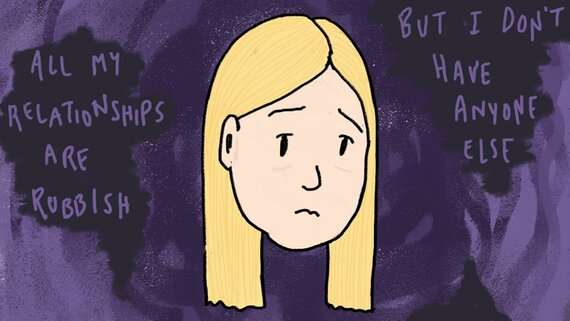Children at risk of sexual exploitation need better support, report concludes

Children who are constantly moved around the social care system are more likely to be vulnerable to sexual exploitation, new research concludes.
Dr. Sophie Hallett of Cardiff University led the study, which used case records to track a cohort of 205 children involved with social services in one Welsh local authority. These were the first young people in the UK to be assessed for their risk to child sexual exploitation (CSE)—as a whole group—back in 2006.
The analysis offers the most extensive insights into what factors contribute to children being more vulnerable to experiencing this form of abuse later on.
Child sexual exploitation happens when victims receive something such as gifts, money or affection as a result of performing sexual activities or others performing sexual activities on them. Dr. Hallett's previous research has shown that CSE is bound up with other problems and difficulties young people are experiencing—problems which can mean that some young children and young people exchange sex as a coping response.
The report shows that females in the cohort were more likely to be victims of child sexual exploitation. If the child had been a victim of sexual abuse previously, they were more than five times more likely to be abused through sexual exploitation.
The other significant factor was moving children from their living circumstances. The more moves a child experiences, the higher their chances are of becoming victims of sexual exploitation later on. On average, children in the cohort were moved to alternative living arrangements nine times. The highest number of moves for one child was 57.
Dr. Hallett, based in the School of Social Sciences, said: "Although only focusing on one local authority, the systemic issues we have uncovered are representative of the sector throughout the UK. A less predictable home environment can have huge consequences for children. Without a stable home life, feelings of rejection and insecurity are exacerbated. For multiple complex reasons, it leads to them becoming more susceptible to this form of abuse.
"The analysis also highlights a number of other problems which, despite their best efforts, make it extremely difficult for those tasked with caring for these young people to be able to offer the right support."
The report, Keeping Safe? An analysis of the outcomes of work with sexually exploited young people in Wales, also shows:
- As well as increasing the risk of experiencing CSE, moving children more frequently from their accommodation raises the chances of them going on to experience abuse in intimate relationships in early adulthood, as well as having an unstable housing situation. It also makes it more likely that the young person is not going to be in education and/or employment.
- One in three young people in the entire study (33.7%) had experienced sexual abuse at some point in their childhood. This figure is higher for young people at high risk of CSE (46.3%). Over two-thirds of the entire sample had previously experienced emotional abuse (70.2%), more than half had experienced physical violence (58%) and half (50.7%) had experienced neglect by parents/caregivers prior to going into care.
- More than half of young people who had experienced CSE had become parents in the period of the study (57.4%) compared to 17.9% in the non-CSE group.
- Interventions commonly used for responses to CSE, such as healthy relationships education, did not have a positive impact for the majority of young people who received this support, and were in some case associated with negative outcomes.
- Having a supportive adult in their lives had the most positive impact for young people. One-to-one work such as spending time with a young person, engaging them in activities, or addressing their confidence and self-esteem, was also the intervention most likely to help—those who received this type of support were less likely to have issues with alcohol and drug misuse and to have involvement with social services later in life.
Alongside this analysis of case files, Dr. Hallett spent six weeks in a children's residential home with young people deemed to be at risk of CSE. She also gathered opinion from social workers, residential care workers, foster carers and young people. She said the research pointed to frustrations that little could be done to tackle the root causes of this abuse.
She said: "The report presents a troubling account of the entire care system. Young people were angry at the bodily or behavioural attention they received and the seemingly limited concern for them and their happiness.
"Foster carers said there was no support to address the abuse or rejection children had experienced and were concerned that the safeguarding measures they were having to put in place were sending messages to young people that they were the ones at fault.
"Residential workers and social workers felt their work revolved around managing risky behaviours and they did not have the resources to focus on deeper causes, such as issues of identity, loss, abuse and rejection that many of these young people struggle with.
"Unless more is done to recognize and address these widespread concerns, child sexual exploitation is going to remain a serious problem."
Dr. Hallett is presenting her findings today to social workers and policy makers. She will share a range of visual tools and materials produced from the research, to generate discussion and to support practitioners and service managers to challenge and change their practice.


















